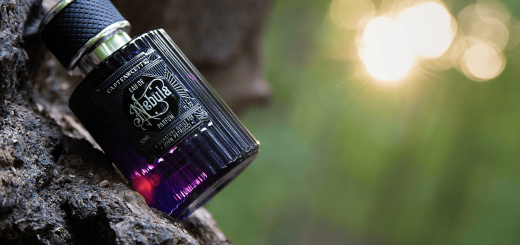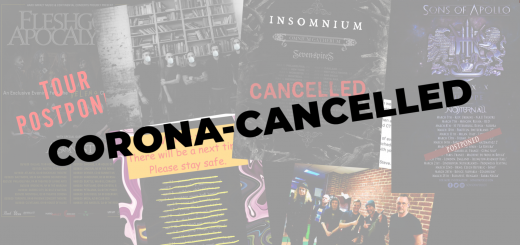‘Overexposed and Underdeveloped’ – The Book From Devin Townsend

The book cover
When an offer to review the new photo memoir from Devin Townsend came across my desk, I was eager yet hesitant. There’s something voyeuristic about delving into the memories and photos of artists and musicians like this, and I was sure that this trip down Devy-memory-lane would be no different. All the same, my love of Devin’s work and knowledge of his various guises throughout the years urged me towards accepting the offer–if only to catch a glimpse of something never-before-seen, or read a heretofore unknown bit of Dev-lore. As the review copy hit my inbox, I set about poring over its contents, making notes, and discovering a new-found appreciation for not just Devin the musician, but Devin Townsend in full context.
The memoir, titled Overexposed and Underdeveloped in a very on-brand bit of punny business, represents both a standalone work and a companion to his 2016 text memoir, Only Half There. This new work seeks to tell the story of Devin’s life through photos of all stripes–from the candid personal and school portraits that dominate the first chapter of the book, through the hyper-stylized press and promotional shots that characterize his work with Steve Vai and beyond. Overexposed… strikes a fine balance between chronicling the formal, polished look of an industry veteran and lampooning the plucky idealism and occasionally goofy demeanor of a life-long rock musician.
In that sense of dichotomy, the book sums up Devin’s persona remarkably well. From the deeply philosophical introduction where he reflects on his life’s experiences and the power of taking time to reflect, to the immediately sarcastic and self-deprecating captions a few pages later where he critiques the “ugly” headboard of his parents bed and laments about the ill-fitting diapers in his baby photos, Devin presents the first of many stark contrasts through his captions and ensures that his recollections are always as entertaining as they are insightful.
In terms of structure, the book is split into several chapters covering a specific, significant period in Devin’s life. We are treated to numerous shots of baby Dev early in the first chapter, complete with school work, hand-drawn comics, and an eventual transition into the “awkward teenage” phase of Devin’s personal life (and fashion sense) in chapter two. As the book soldiers on, there is a marked increase in image quality and volume proportional to the amount of stress and strife Devin starts to experience in his musical career. With his entry into the world of Steve Vai and Sex and Religion, we venture down a uniquely eerie path full of professional photoshoots, contact sheets, and a scene of Devin that is idealistic and optimistic at first, but grows increasingly disillusioned with the music business in general with every page turn. Indeed, by the end of chapter three and the start of the Strapping Young Lad, Devin seems to be at the peak of his anger and disillusionment, reflected in the characteristically wild, occasionally off-kilter photoshoots. All the same, these moments are always accompanied by a caption from an older and wiser Devin, interjecting with context and deeper understanding through every pose and frame.
Later chapters are also where we more clearly see the pathos of Overexposed… take center stage, to add additional colour over the foundation that was established by those first chapters. Throughout the chapter entitled People in Plastic Houses, a narrative soon develops as Devin explains his increasingly disconnected and dissociated emotions and state of mind during this period. While folks familiar with Devin’s history and back-catalogue will already be well aware, newcomers and late-adopters may be surprised to see this disconnected, “beige Devin” take center stage and carry forward until the metaphorical “re-birth” of chapter seven. I found myself empathizing strongly with him here as someone who has experienced similar disconnected, dissociated feelings and also as someone who interviewed Devin during this time and saw a bit of it first-hand. All the same, while an important source of emotional connection and vulnerability, this chapter (along with the following, final chapter entitled Deconstruction) introduced my biggest source of criticism regarding the book–the structure and pacing.
The final two chapters of Overexposed… (the aforementioned People in Plastic Houses and Deconstruction) span the period from the Physicist album in 2000 right up to the present–-around 24 years and nearly an equal number of albums. With so much ground to cover, numerous details are left out, with many albums or promotional photos being skipped entirely. For a book that spent an entire chapter devoted just to recording and touring for Sex and Religion, I found myself disappointed with how sparse the details were surrounding this later period. Maybe there were issues securing publishing rights for the photos? Maybe Devin and the publishers wanted more time and perspective before including them? Whatever the case, the speed with which the book wraps up feels rushed and negatively affects the overall cohesiveness for me. I would have loved to see those two final chapters split into three or more segments, with more time and attention paid to the period. As it stands now, the book feels only half-finished in some of the more recent sections–possibly leaving an open door for a later edition, I hope.
All the same, despite these structural issues, I still found myself scrolling back through my copy multiple times with a newfound appreciation for the sheer generativity of Devin throughout the years. The volume and stark contrast of his work was presented to me in a way that only images can offer, and each reading forced me to see more of his work with new eyes. Beyond Devin’s creative output, however, I was also continually struck by his vulnerability and willingness to show the less-flattering images of himself throughout the years, with his slightly self-deprecating sense of humility shining through in each caption. As Devin writes in the introduction, “Reflection is a hell of a thing…” and I, for one, am glad to have been witness to it.









